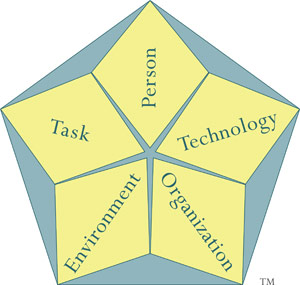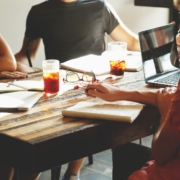It’s time to Build Back Better Work
By Katherine Sanders
You might have heard the phrase Build Back Better. When relief workers and engineers support communities in rebuilding after natural disasters, they #buildbackbetter. They don’t attempt to recreate what was destroyed or damaged, they design for improvement.
They invest in resilient design. They strengthen structures and improve systems so that the next time a disaster strikes there will be less damage, less suffering.
The entire world is enduring a nested set of disasters – a pandemic and a resulting economic crisis. These combined crises are laying bare systems that have been broken for decades.
The justice, healthcare, education, finance, transportation, food supplies, manufacturing and public health systems have long been ineffectual for the majority of people, but especially for communities already at risk from poverty and systemic racism. These systems haven’t been fulfilling their missions for most – and as they break down from the pandemic and economic stresses – we cannot make our goal to go back to ‘business as usual.’
Chronic structural racism and social inequities mean that communities of color are suffering disproportionately. Protestors’ voices have sparked a vital social justice movement. All of our systems must build back better. That includes our work systems.
Efforts to build back better are already underway across the country and the world. Protestors and responsive leaders are making headway for social justice reform. Food supply chains are being rerouted so that less food is wasted and more food is channeled to those who need it. Educational access is being rethought as online education becomes necessary. Public health systems are being expanded and better-resourced, focusing more effectively on at-risk communities who have been systemically underserved.
All of these reforms require us to work in new ways toward new goals. Our public health and healthcare professionals, first responders, educators and business leaders will be doing some different work and doing some of their previous work differently.
Work is foundational to safety & equity
Our workplaces are a foundational piece of making life safer and more equitable. There is no such thing as a healthy community without healthy work systems for people to work within and be served by.
Safety at work isn’t just rule-following, especially when the rules keep changing. Safety requires employees to have the capacity to respond to situations as they emerge. That means we have to design work so that people have the capacity to keep themselves safe. We have to rethink what we’re asking from our people, not just provide PPE and hope for the best.
Organizational resiliency also relies on employees having the capacity to respond to what’s asked of them. So many things are changing at once. Organizations need their people to be able to keep up. It is vital we let go of things that are not necessary and/or that create barriers for our people. We need to rethink our workflows – what we’re doing, how we’re doing it and how much we’re asking of our people.
Inequities make it more difficult for our people to feel safe and productive at home and at work. Just because we are all in this situation together does not mean we are all having the same experience. This situation affects each of us differently, according to our privilege and resources. What works for one person or group might not work for another. The only way to find out what your people need is to ask them and then respond to what you learn.
People need input into the decisions that affect them. Your people might need more flexible work hours. They might need higher base pay or an option for job-sharing. They might need production quotas adjusted, work from home or transportation options, help with daycare or better access to healthcare. They might need the authority to make changes to simplify workflows or rethink safety protocols.
How do we know what to change?
We start by having a conversation with our people. We do this systematically and iteratively. Listening sessions aren’t enough. This isn’t a ‘one-and-done’ situation. This isn’t a free-wheeling, ‘tell me what’s on your mind’ conversation. In order to enact system reform, we have to look at each part of the work system and how it impacts our employees, clients and community.
We structure the conversations so that everything about the work system is on the table – the design of the jobs, the technologies, the physical & social environment, as well as our policies, procedures, rules and reward structures. We talk about money. We talk about access. We talk about safety. We talk about the entire work system. This is how systemic changes take root.

Work Systems Model
We can start at the most basic level by asking our people what they need in order to stay safe, psychologically and physically. We respond to what they tell us and we check in periodically because we know the situation keeps changing.
We ask our people what we need to implement or eliminate to increase equity. We ask about the entire work system with the understanding that equity doesn’t mean the same. Equity means that everyone’s needs are considered. Everyone’s health is considered. We design our jobs, equipment, access, work environments and policies, procedures and reward structures to promote human health. We ask our people what that means to them, knowing that it will require us to be flexible and innovative. What one group needs might be different than another, and that’s to be expected.
This doesn’t mean that everyone gets everything they ask for, because that isn’t sustainable. But it does mean that we make choices on what to invest in based on the health of our employee-stakeholders (not merely our shareholders) and the sustainable health of our communities.
When we commitment to listening to our people and responding to what our people need from us, trust grows. When we promote employee health, our people are able to focus more energy on being productive and safe in an unstable situation.
I can help you as you lead these systematic conversations with your people.
The work systems model is a great starting point. You can talk with your people about each aspect of your work system and how it can create greater physical and psychological safety as well as greater equity.
My work systems programs provide a simple framework for these iterative conversations. They’re available whenever you need them.
If your organization is ready for a custom approach, contact me so we can discuss how I could support your group.









